I have already mentioned that my short stay in Egypt towards the end of 2021 served as a nice reminded of my visit to this country in 2001.
That time, on the second day of our trip, as a group, we visited central parts of Cairo (back then I travelled with a tourist group). Going through a major traffic jam that is so typical of the capital of Egypt, we reached the spacious El Tahrir square where one of the most important museums in the world – the Egyptian Museum in Cairo – is located.
The museum is dedicated to the displaying of artefacts linked to Ancient Egypt and one can spend almost days at the museum looking at different objects, statues, papyruses, stales, as well as sarcophaguses and mummies. We spent a relatively short period of time here, but we still managed to see some of the most important exhibits.
Perhaps the most attractive are the objects found in the tomb of Pharaoh Tutankhamun.
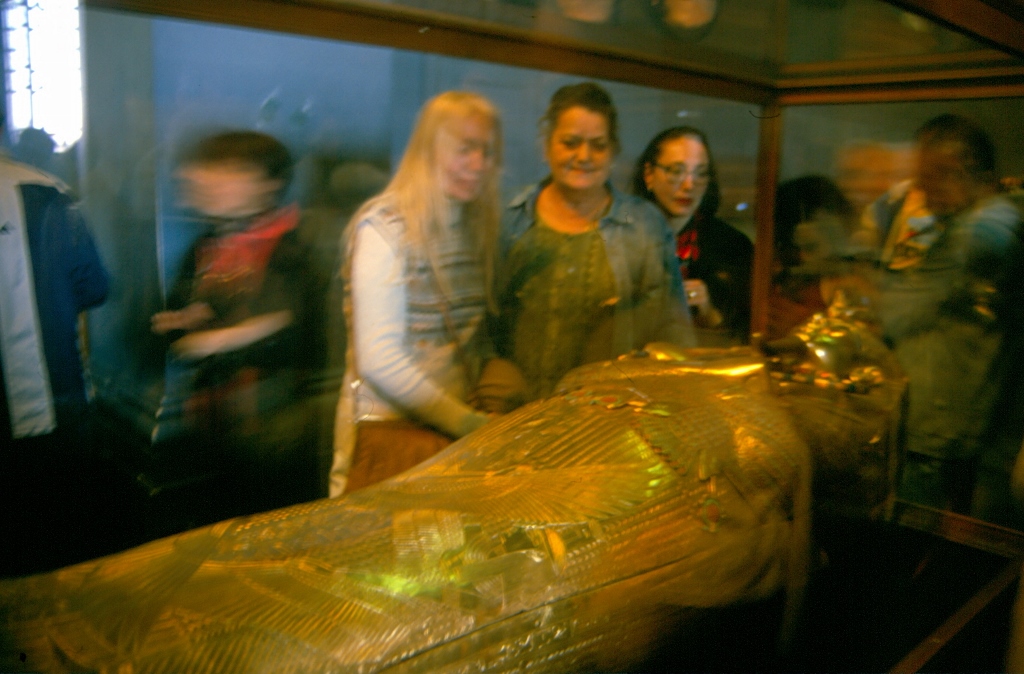 One of the gold sarcophaguses in which the mummy of Pharaoh Tutankhamun was placed
One of the gold sarcophaguses in which the mummy of Pharaoh Tutankhamun was placed
Pharaoh Tutankhamun was a ruler from the 18th dynasty (1332-1323 BCE), but before I say something about him, let me also mention that his father was a very interesting figure. This was Pharaoh Akhenaten (1352-1336 BCE) who changed almost at the level of revolution the Ancient Egyptian polytheistic religion into a monotheistic one with god Aten, the disc of the Sun, in the centre. Because of this, the pharaoh changed his original name, Amenhotep IV, into a new one. Although in 1346 BCE Pharaoh Akhenaten even moved the capital of Egypt to a new place called Akhetaten, nowadays this archaeological site being called Amarna, his version of the religion lasted very briefly, i.e., only until the end of his life. Although all of this is interesting in its own right and makes Pharaoh Akhenaten famous and unique within the Ancient Egypt’s history, I think that the fame of his chief wife surpasses by far that of the pharaoh himself. At least in the popular culture, because this was the beautiful Nefertiti, the famous bust of whom may be seen in the Egyptian Museum in Berlin. Still, she was not the mother of Pharaoh Tutankhamun – this was a sister of Pharaoh Akhenaten (incestuous marriages were quite a common occurrence among the rulers of Ancient Egypt).
Now, let me deal with Tutankhamun a little bit. He was born while his father was already ruling from Amarna and so originally he also had a name that reflected the religious convictions of his father – TutankhATEN, but he did not succeed his father directly, rather, between the two of them there were two other rulers (male or female, it is not known exactly) who ruled for a year or two each.
When Tutankhaten came to the throne at the age of 8 or 9, the circumstances in the country had already changed significantly, the capital had been returned to Thebes and the old beliefs had also come back, so the name of the pharaoh was changed, too, and this is how he is known in history – TutankhAMUN. Pharaoh Tutankhamun ruled for a very short period of time and he died when he was 18 or 19 and it is almost certain that he would have remained a mere pale figure in the history of Ancient Egypt had it not been for a chance. Namely, the young pharaoh died suddenly, there was no time to build a large tomb and he was put into a smaller one. The entrance to this tomb was soon covered with material dug out during the construction of some other tombs. And so it all remained like that until 1922 when the tomb was discovered and opened for the first time after nearly 3500 years in February 1923.
At that time, the archaeologists found over 5000 objects in the tomb, the only one that has been discovered untouched, i.e., not looted, and many of these objects may be seen displayed precisely at the Egyptian Museum in Cairo. This is information from December 2021, since in the meantime it has been announced that the Grand Egyptian Museum will be opened in Giza and it will display all the artefacts found in the tomb of Pharaoh Tutankhamun.
Be as it may, I saw some of them in Cairo in 2001.
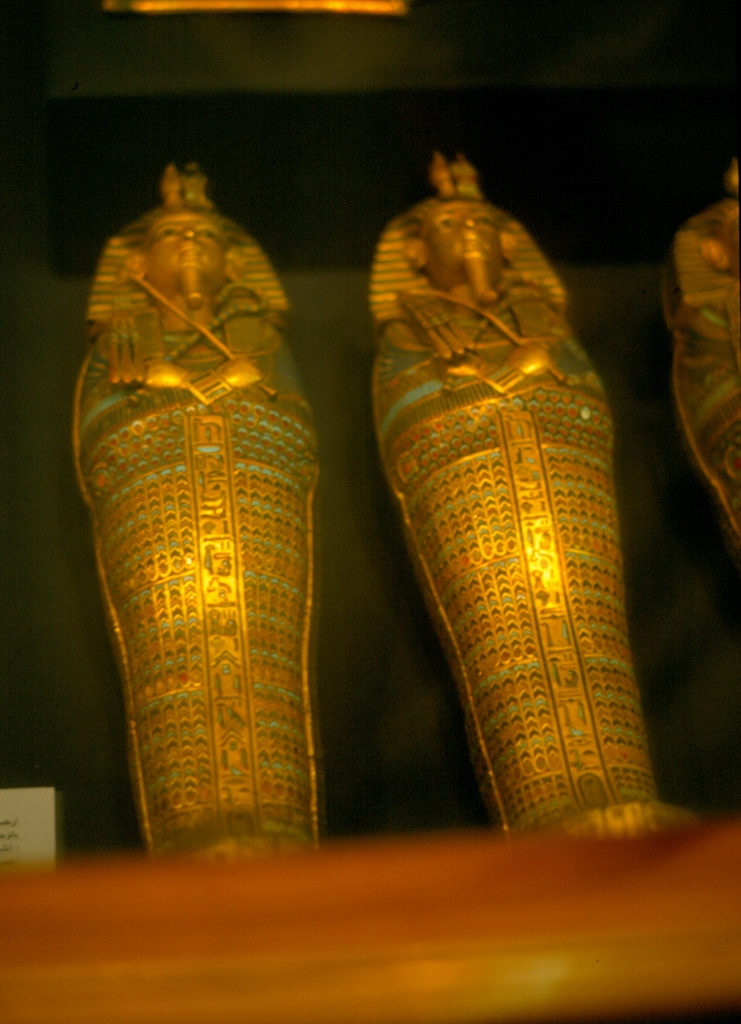 A part of the collection found in the tomb of Pharaoh Tutankhamun
A part of the collection found in the tomb of Pharaoh Tutankhamun
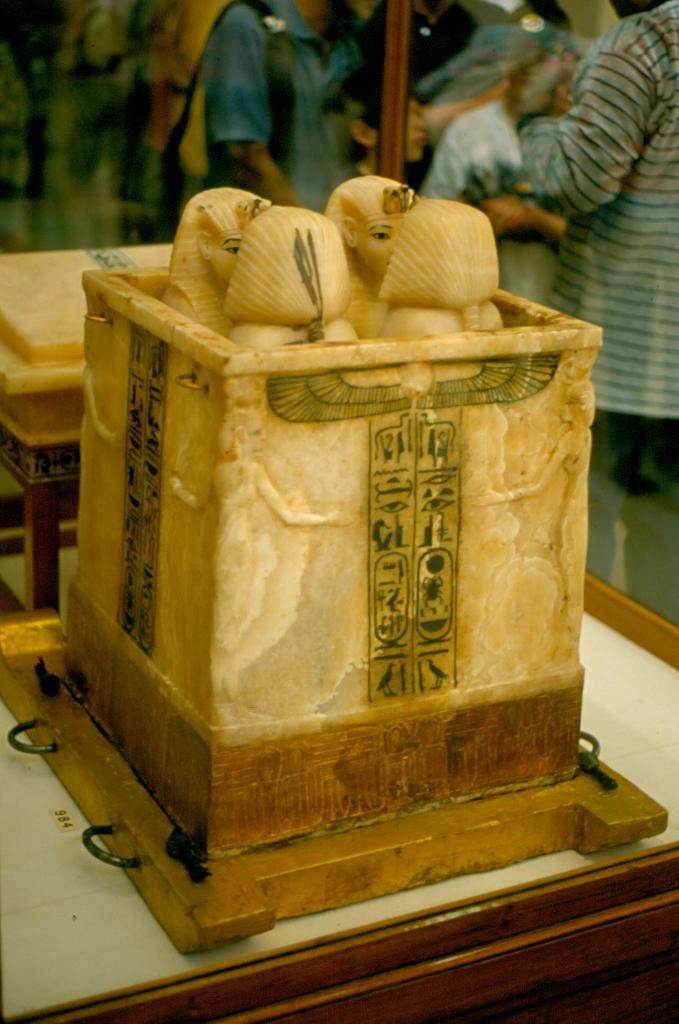 A part of the collection found in the tomb of Pharaoh Tutankhamun
A part of the collection found in the tomb of Pharaoh Tutankhamun
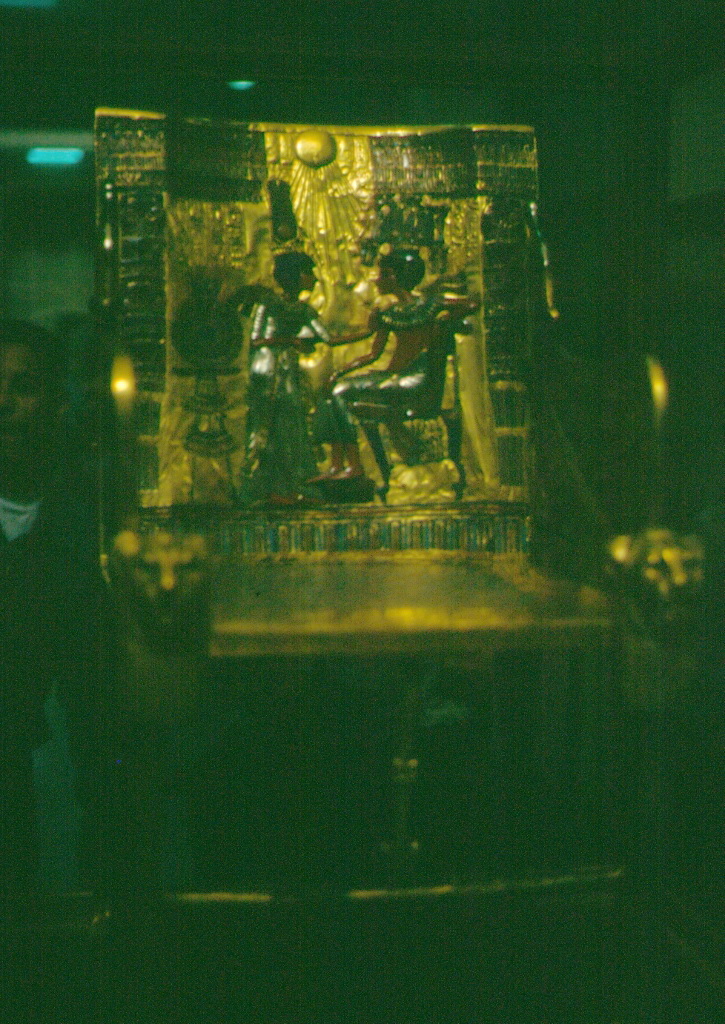 Bad photo, but a beautiful gold throne found in the tomb of Pharaoh Tutankhamun
Bad photo, but a beautiful gold throne found in the tomb of Pharaoh Tutankhamun
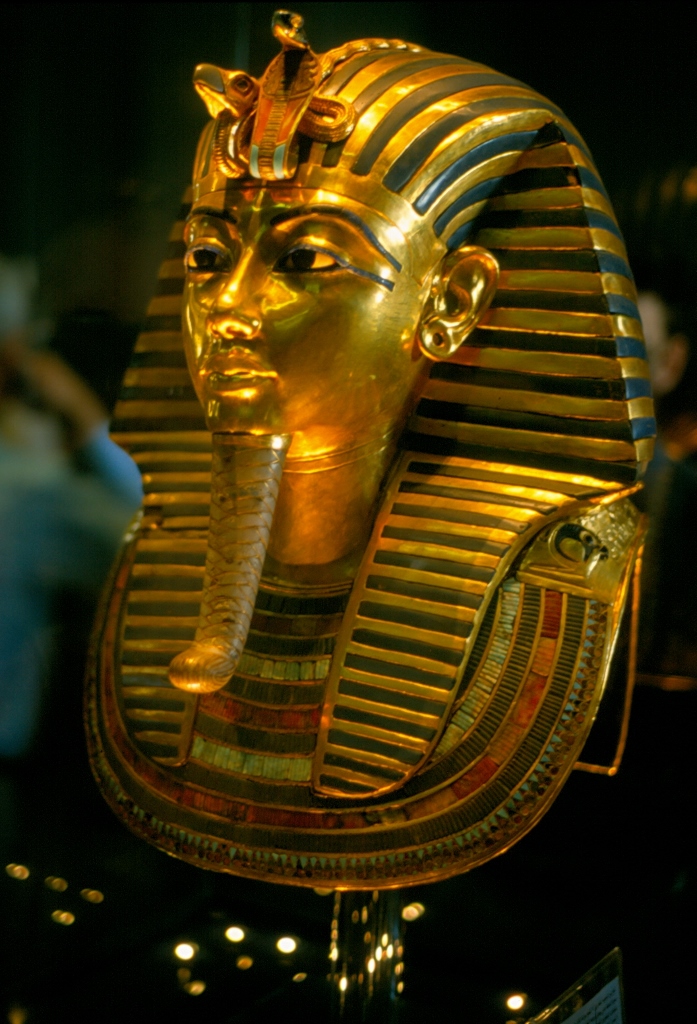 And, of course, the famous gold mask of Pharaoh Tutankhamun
And, of course, the famous gold mask of Pharaoh Tutankhamun
After the visit to the Egyptian Museum in Cairo, we got into the coach again and driving along a Nile bank we headed south since the next destination in our sightseeing tour was the Coptic Quarter.
Namely, nowadays, around 10% of the population of Egypt are members of the Coptic Orthodox Christian Church, while around 90% are Muslims, with a small number of other religions.
According to the ancient tradition, Christianity started to get its followers in Egypt already in the 1st century CE and it was primarily accepted by the Copts, an ethno-religious group that mostly inhabits Egypt and Sudan. Most of them are precisely Orthodox Christians.
In the old part of Cairo there are remains of an ancient fortress called Babylon. It is usually said that its construction started in the 6th century BCE (although some believe it is older), but later the Romans built a new fortress, closer to the river. It is precisely within the enclosure walls of this fortress that the most important monuments of culture belonging to Coptic Cairo may be found. They were built after the Muslim conquest of Egypt in the 7th century.
We first went to visit the Church of Mother of God Saint Mary in Egyptian Babylon, which is also known by its shorter name, the Hanging Church.
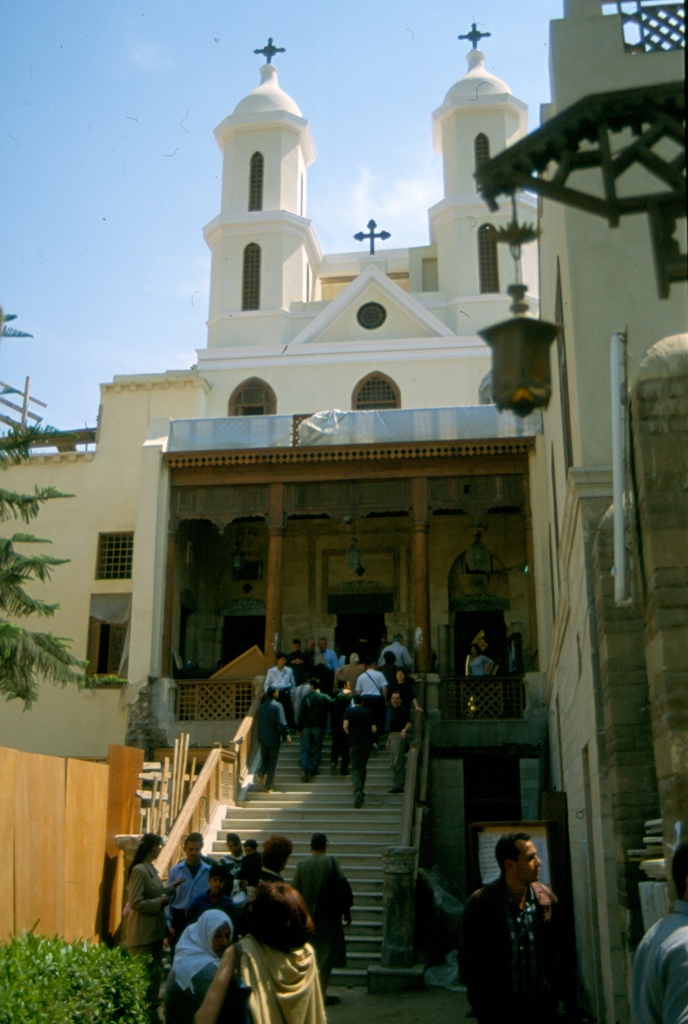 The Hanging Church
The Hanging Church
This is one of the oldest churches in Egypt and the Middle East, and it was built in the 3rd century CE. The reason why it is called “the hanging” is that it was built over remains of the Babylon Fortress and so its naos is located above one of the passageways that used to belong to the fortress, while the church is reached by climbing stairs. The interior of the church is opulently decorated.
After a short visit, we moved on by walking along the narrow, winding streets that are characteristic of the Coptic Quarter. These narrow streets are not there without a reason and they actually survived as a defence strategy from the times of the ancient Romans, since they prevented enemies from charging directly with full force.
Not far from the Hanging Church there is the Ben Ezra Synagogue which is the oldest in Egypt and according to the tradition it was built at the spot where Moses was found. Needless to say, the building that may be seen here today is not as old as the institution itself and it dates back to the 19th century, while it is believed that the synagogue was first founded before 882 CE and even before the arrival of Islam here.
We also saw the Church of St. George that belongs to the Greek Orthodox Church of Alexandria and it was founded here in the 10th century, although the building that can be seen today was constructed at the beginning of the 20th century. Not far, there is also the Coptic Church of Saints Sergius and Bacchus, built in the 4th century and according to the Christian tradition it was constructed at the place where the Holy Family stayed during the Flight into Egypt.
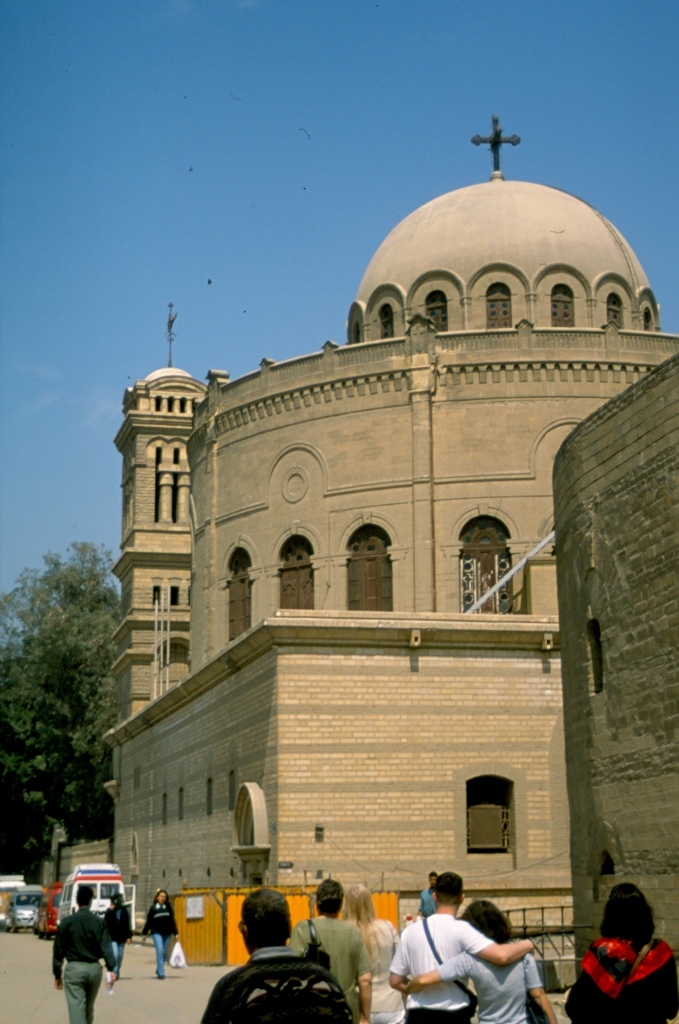 Church of St. George in Cairo
Church of St. George in Cairo
Of course, we saw all of this very superficially, whether we entered these buildings or not. And so, after the short stroll around the Coptic Quarter, we got onto the coach again and transferred to Historic Cairo which, as a cultural property inscribed in the UNESCO World Heritage List, comprises five sites.
While driving on, the coach passed by one of these sites. This was the south part of a large historic necropolis called Al-Qarafa or the City of the Dead and within this part of the necropolis there is the Al-Sayyidah Nafisah Mosque, as well as several other important mosques and mausoleums. By the way, this necropolis also has its north section that is even bigger than the south one and also contains numerous mausoleums and funerary complexes.
On this occasion, we did not stop here, but rather continued in the direction of another site that is included into this cultural property and that was the Citadel of Saladin, a medieval fortress built by famous Saladin, one of the most prominent Muslim rulers and military leaders. The fortress was later expanded by subsequent rulers of Egypt.
By the way, when I’m talking about different places in Cairo and even mention that we either did not visit them at all or were there for too short a period of time, this all still makes sense to me. Primarily to show that Cairo is not only about the pyramids and other archaeological remains from Ancient Egypt. This area is very rich in history and, especially in Cairo, there is a large multitude of sites that are absolutely worth the visit. Unfortunately, the tourist excursions are usually too short and limited, so the visitors don’t see many of these places as this should be done and as these places deserve.
Even when it comes to the Citadel of Saladin, we practically only went to its top in order to visit the Great Mosque of Muhammad Ali Pasha or Alabaster Mosque. The reason for this second name lies in the alabaster tiles that cover the lower section of the mosque, both on the outside and on the inside, up to the maximum height of 11.3 m.
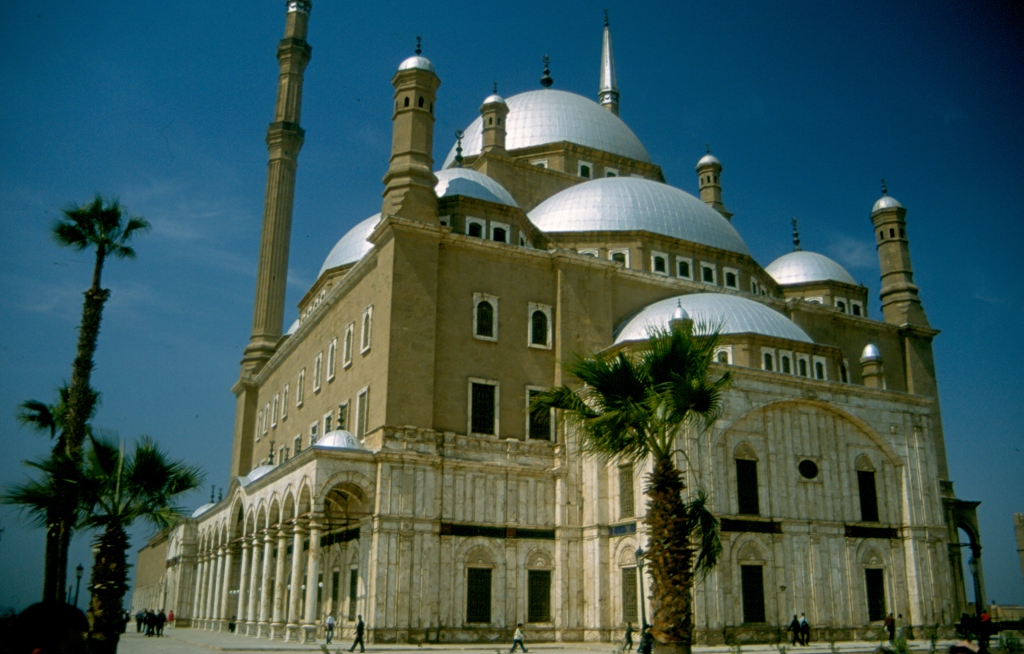 Great Mosque of Muhammad Ali Pasha
Great Mosque of Muhammad Ali Pasha
The mosque was built between 1830 and 1848 by Muhammad Ali of Egypt who was officially the Ottoman governor in Egypt, but practically the ruler of Egypt from 1805 to 1848. He is considered the founder of modern Egypt and he also established the dynasty that ruled Egypt until the 1952 revolution.
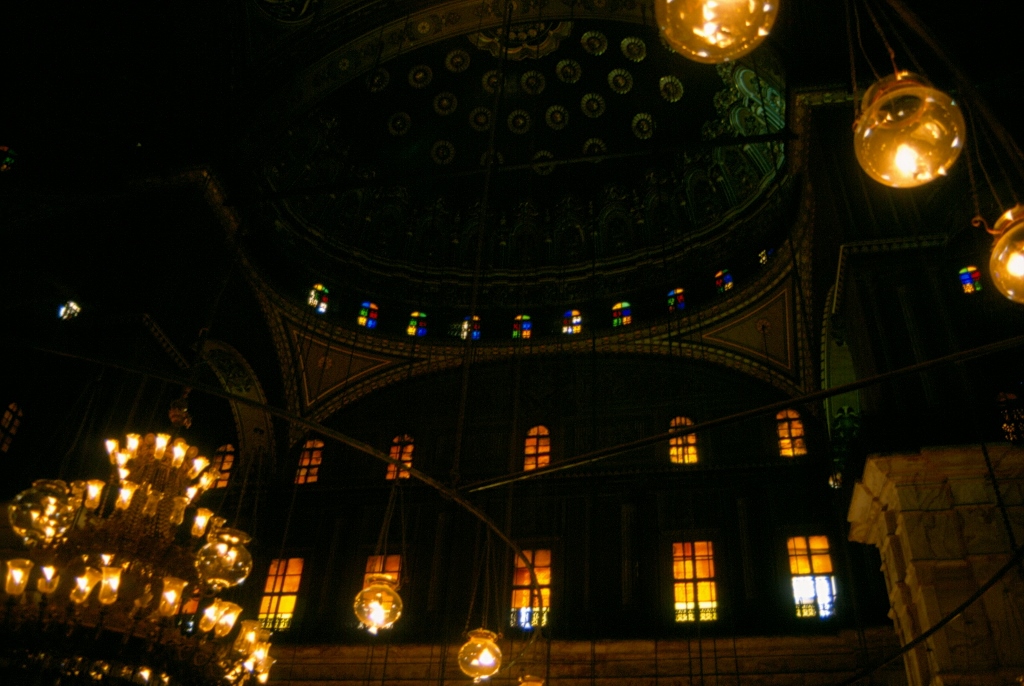 Interior of the Great Mosque of Muhammad Ali Pasha
Interior of the Great Mosque of Muhammad Ali Pasha
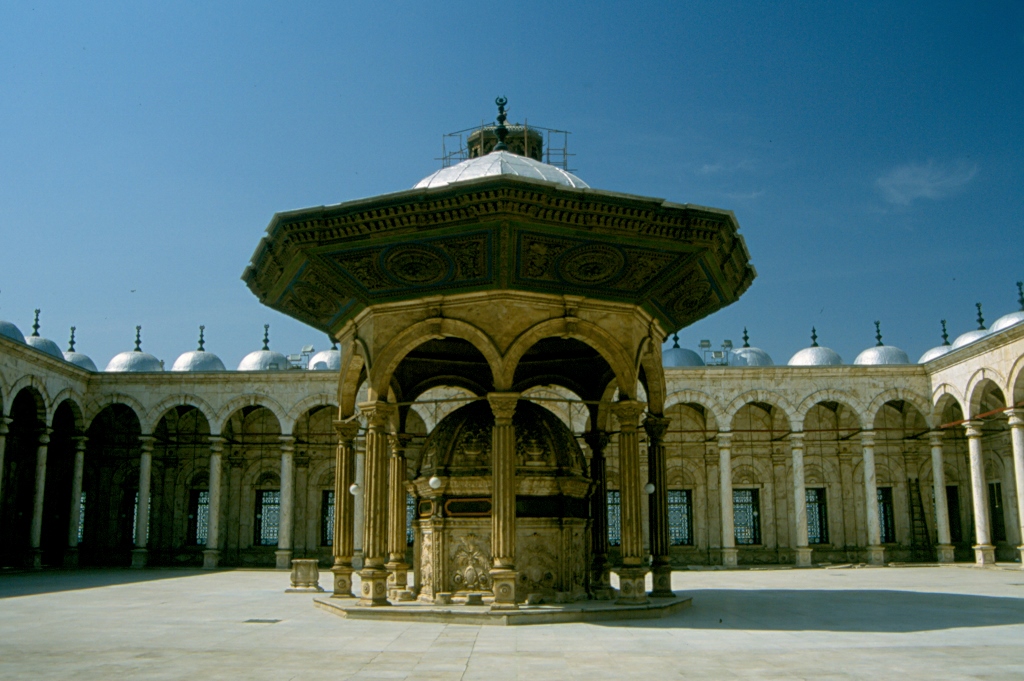 Inner courtyard of the Great Mosque of Muhammad Ali Pasha
Inner courtyard of the Great Mosque of Muhammad Ali Pasha
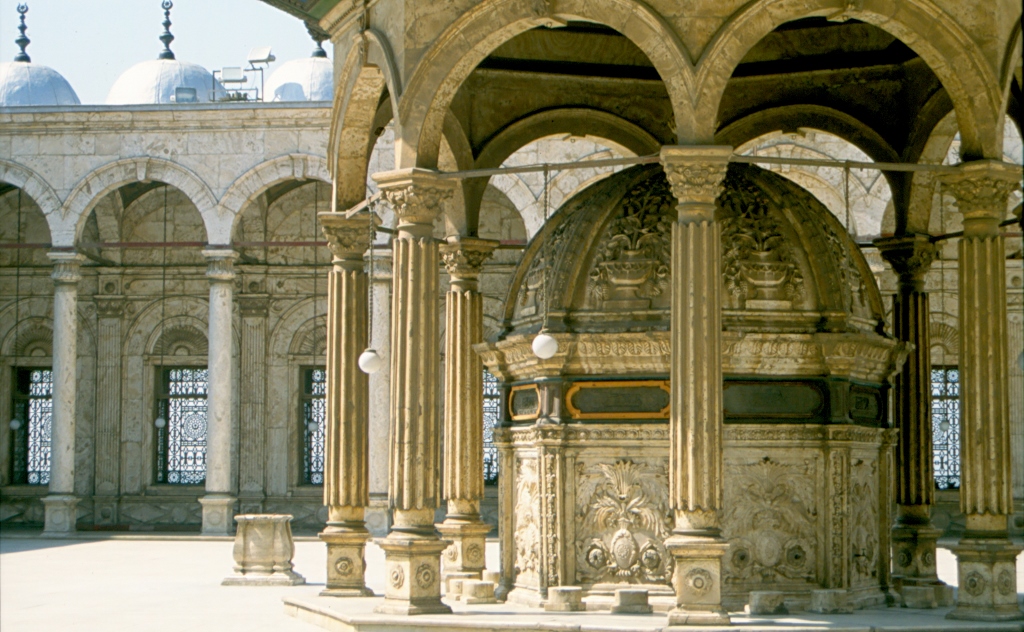 Inner courtyard of the Great Mosque of Muhammad Ali Pasha, a detail
Inner courtyard of the Great Mosque of Muhammad Ali Pasha, a detail
Because of its position on the top of the citadel that is on the top of a hill, the mosque may be easily seen from all parts of the city, but its position also allows a wonderful vista of Cairo.
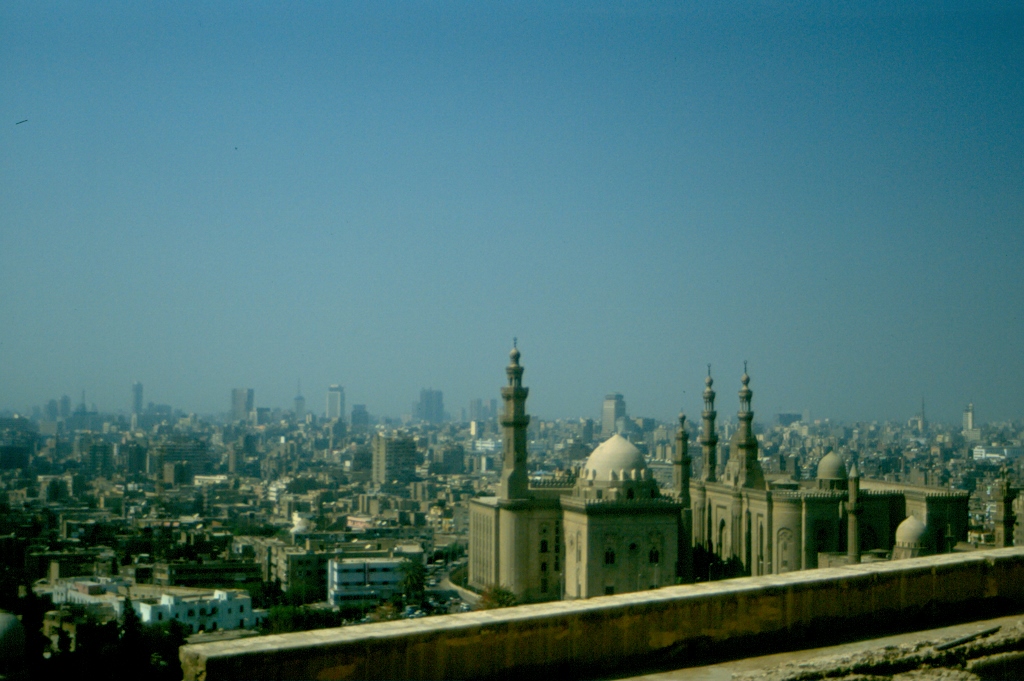 View at Cairo from the plateau by the Great Mosque of Muhammad Ali Pasha; the Mosque-Madrasa of Sultan Hassan is in the foreground
View at Cairo from the plateau by the Great Mosque of Muhammad Ali Pasha; the Mosque-Madrasa of Sultan Hassan is in the foreground
The Mosque-Madrasa of Sultan Hassan that may be seen in the photo above was built around the middle of the 12th century. At that time, it was considered very significant because of its size and the innovative architectural elements, but even today it is very important as one of the most striking historical monuments in Cairo.
Then as a group we entered the coach again and were taken to Khan el-Khalili. This is a famous souq, i.e., a part of the city with numerous shops and stalls, because the time came to go shopping for souvenirs and all sorts of artisanal objects. Still, before entering the narrow streets and passages that go between the shops, we also saw the beautiful Al-Hussein Mosque.
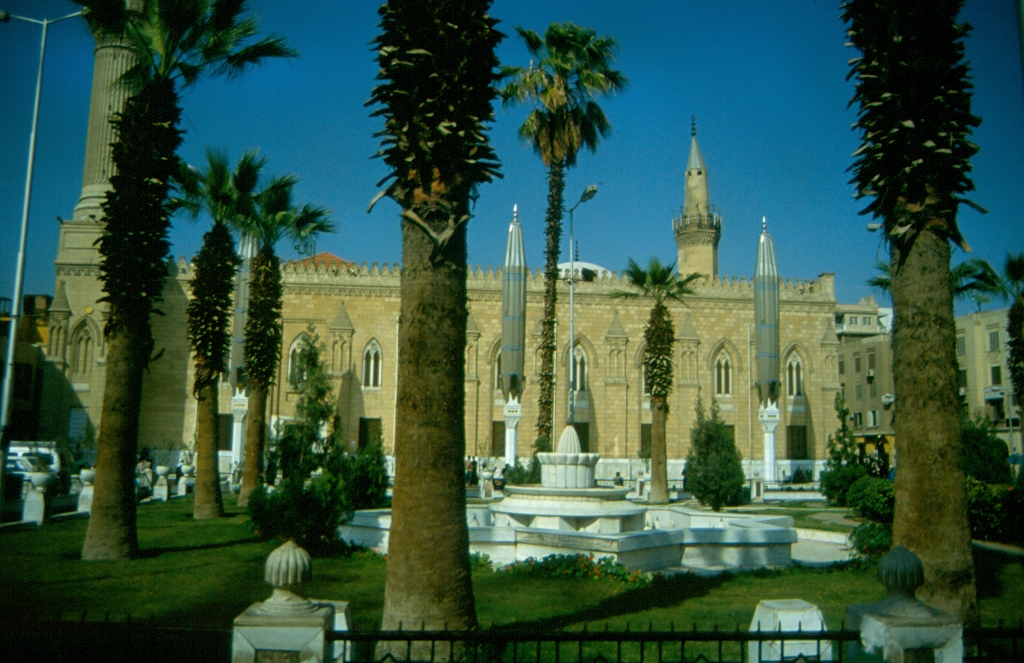 Al-Hussein Mosque
Al-Hussein Mosque
The mosque was originally built in 1154, but it was reconstructed in 1874. It is one of the most holy Islamic sites in Egypt.
Then, of course, we entered the souq or the grand bazaar and the main problem there was that one could get lost. Still, everything went well.
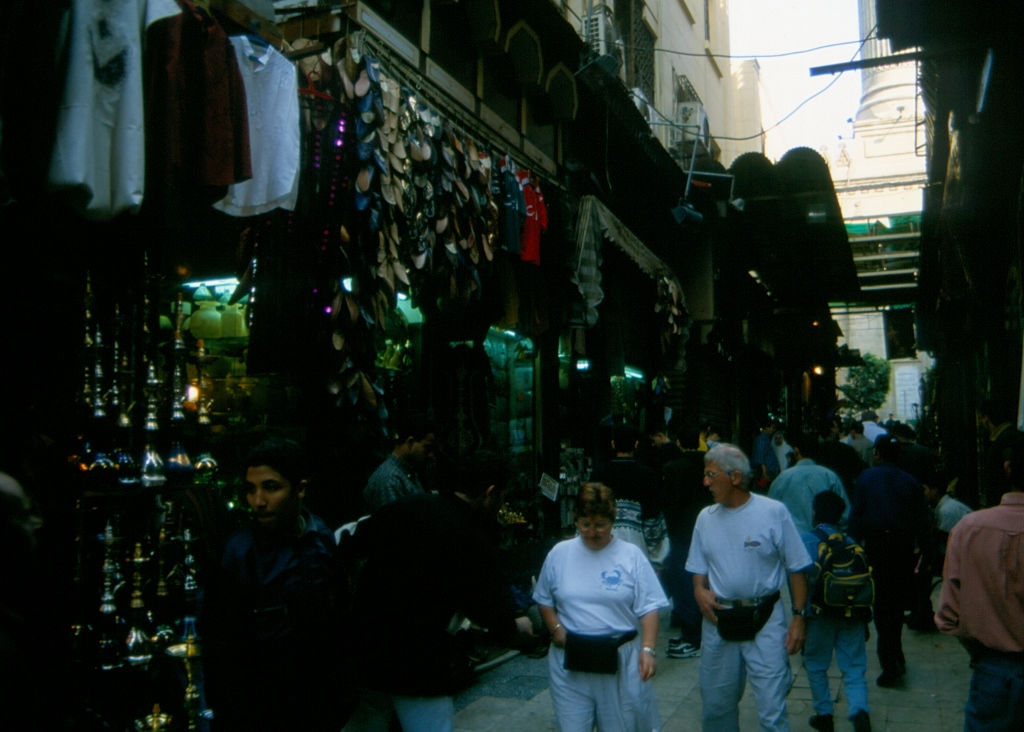 A detail from Khan el-Khalili
A detail from Khan el-Khalili
After this break for the visit to the souq and possible shopping, we were taken to a typical papyrus workshop where the visitors are first shown how to make a type of writing paper out of papyrus plant (Cyperus papyrus) and then those same visitors have a chance to buy contemporary paintings done on papyrus that have either ancient Egyptian motifs or all sorts of modern motifs. This was also the place where our sightseeing of Cairo ended on this day.
The next day we had free time. That meant that my mom and I took it easy at first and then we went again to the large central El Tahrir square, since I wanted to revisit the Egyptian Museum the official name of which is The Museum of Egyptian Antiquities. The reason for this was that I was looking for a very specific exhibit (a stele) which I eventually did manage to find, but my photo did not turn out well and that’s why it’s not here. Well, this does not matter much, but I was very content that in the huge multitude of exhibits I did succeed in my intent and quest.
Afterwards my mom and I went up to a restaurant on the top of a large hotel at El Tahrir Square in order to get some refreshments during a short break. We also had a wonderful view from there at the surroundings. Again I was using my video camera here and this is why the pictures are a little blurred.
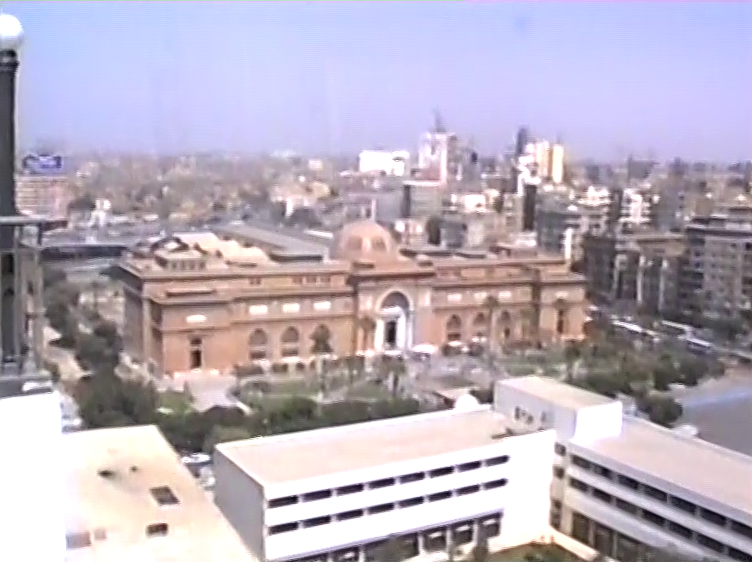 View at the Egyptian Museum
View at the Egyptian Museum
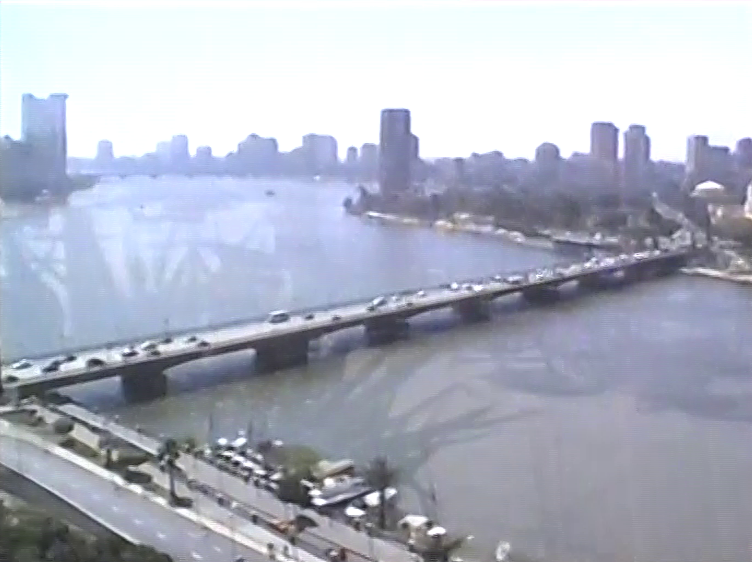 View at the Nile and the Qasr El Nil Bridge
View at the Nile and the Qasr El Nil Bridge
And then we had a very interesting and quite an unusual activity, my mom and I. Namely, my mom’s aunt, a sister of her father, used to work at the famous Shepheard’s Hotel in Cairo back in the day. The two of them met once before WWII when her aunt, Merica, came to visit her brother and his family in Leskovac, Serbia, for a week. My mom was a little girl at the time, but she had exceptionally good and picturesque memory and often told us about these recollections of hers and the whole experience with the proverbial “rich aunt from abroad,” except this really happened. My mom even remembered the name of the hotel her aunt used to work at, which only goes to show how this early childhood experience made a strong impression on my mom and her memory.
The Shepheard’s Hotel was the leading hotel in Cairo and one of the most famous hotels in the world from the middle of the 19th century until a large fire in which it was destroyed in 1952. It even “appears” in the famous film “The English Patient.” Five years after the fire, a new hotel was built and now my mom and I went there, frankly speaking, I don’t know why. In fact, at that time I thought that perhaps we might find some archival data about former employees. Of course we did not. But, that was not so important. What was important here was our search, as well as my wish to gratify the memories of my mother by trying to supplement them.
Later that day, we all gathered at the hotel as a group and were transferred to the railway station since we had a night train to Aswan. The seats were exceptionally comfortable and wide, and could recline, so that night ride was not bad at all and we could all get comparatively good sleep.